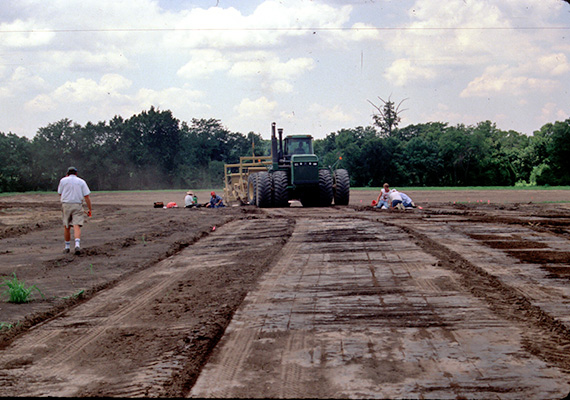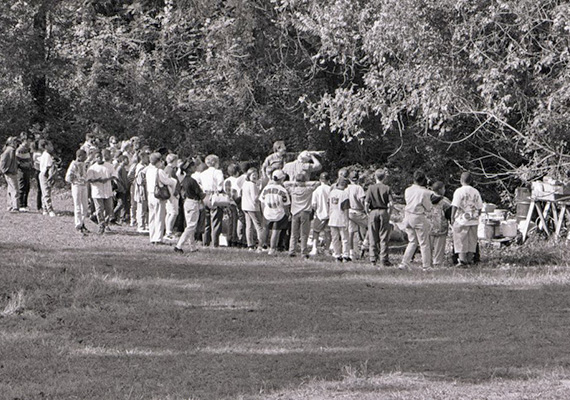
By Tim Mulvihill and George Sabo III
Dr Jeffrey M. Mitchem (Figure 1) retired as the Parkin Archeological State Park Research Station Archeologist for the Arkansas Archeological Survey and Research Associate Professor of Anthropology for the University of Arkansas at the end of March 2022. Here is a summary of Jeff’s major accomplishments during his long tenure with our organization.
Jeff earned his doctorate at the University of Florida in 1989 under the direction of Dr. Jerald T. Milanich, with his graduate work focused on early Spanish contact sites in Florida. He was the field supervisor for three field schools at the Tatham Mound site, a late prehistoric/early contact site and this work served as the basis of his dissertation Redefining Safety Harbor: Late Prehistoric/Protohistoric Archaeology in West Peninsular Florida (Mitchem 1989). Following short term appointments at Florida State University and Louisiana State University, Dr. Mitchem was hired in 1990 to establish the ARAS Parkin Research Station as part of Parkin Archeological State Park, the site of a 17-acre Mississippian fortified village (ca. AD 1000-1600) and believed to be the village of Casqui described in the narratives of the Hernando de Soto expedition. He was the last station archeologist hired by the Survey’s first director, Dr. Charles R. McGimsey III. Research interests throughout his career have focused on early Spanish/Native American contact in the southern United States, including the study of glass beads, and European weapons and armor. He is a past president of the Society of Bead Researchers and has conducted research on archeological bead assemblages from Florida and other New World areas. Other research interests have included ceramic technology, burial customs, aboriginal architecture, and the history of archeology.
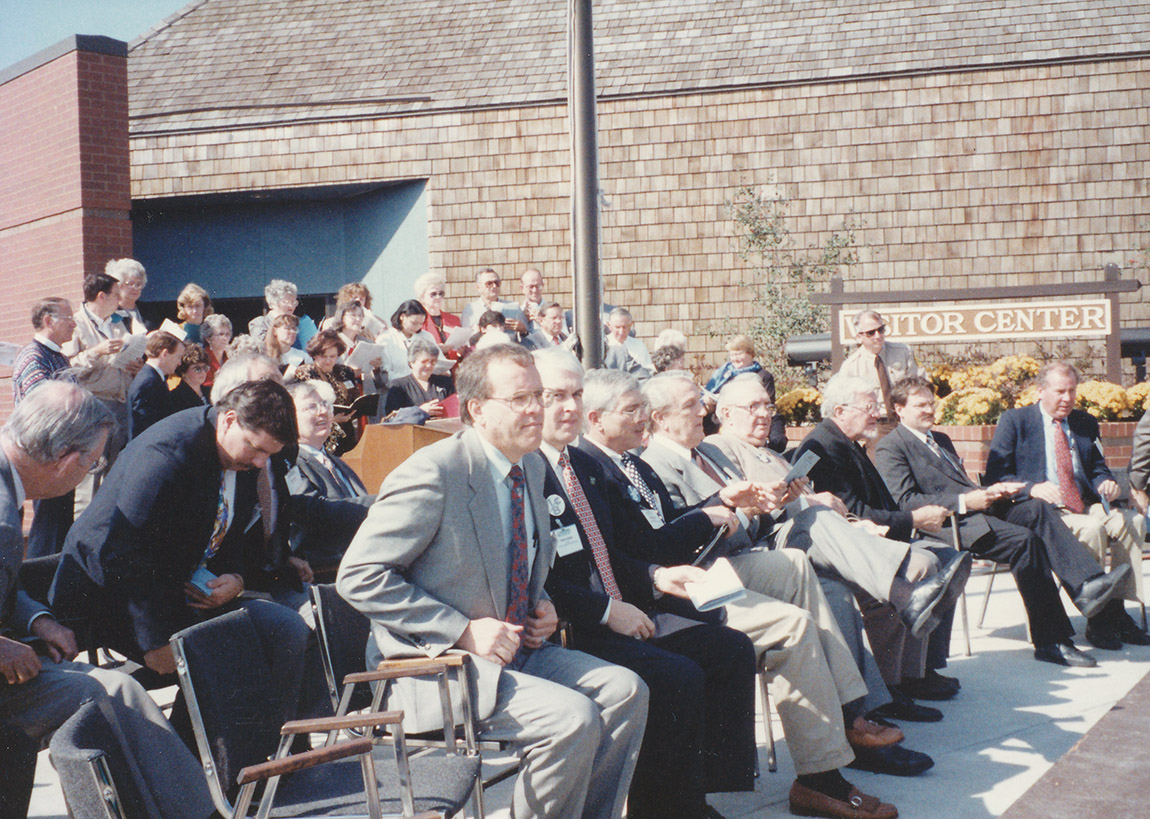
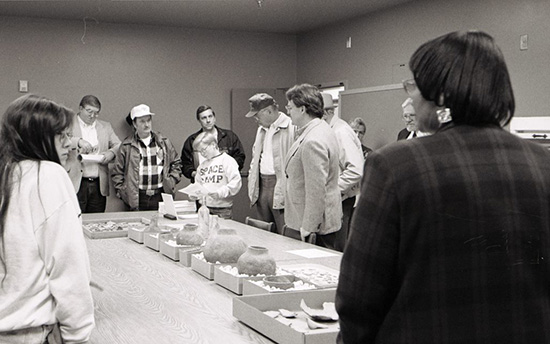
Parkin Archeological State Park was established by Arkansas state legislation as a park in 1967, but not funded until 1989, so it was Jeff’s mission to develop the research station from its beginning, including being part of the team involved with planning the design of the Visitor Information Center which included a museum, audiovisual room, gift shop, park offices, research station laboratory, curation room, and station offices. The initial temporary offices and lab were offsite in the back of a local dentist’s office. It wasn’t until 1993 that the research station moved to its permanent location inside the new visitor’s center at the park, with the dedication ceremony following the next year (Figure 2-3). Jeff continued to assist State Parks with the design of museum exhibits (and updates), wayside exhibits, plans for a walking trail, and also consulted on merchandise to be sold in the park’s gift shop.
Dr. Mitchem directed the archeological research at the Parkin site, starting in 1990 with test excavations concentrated on the location of the proposed new Visitor Information Center to ensure no significant archeological remains would be impacted. Major excavations took place on the Parkin site the following year beginning in July 1991. Four field crews of eight people each were hired, along with experienced field supervisors, to work in four different loci on the site. Jeff continued directing excavations on the site through the 1990s, using small crews, archeological field schools sponsored by the University of Arkansas (in 1992, 1994, 1997, 1999), and a robust volunteer program which had participants from across the US and beyond (Figures 4-6).


Excavations uncovered evidence of the moat that surrounded the site, information on the houses/structures at Parkin and how construction methods changed through time, subsistence information of the people who once lived there, and further evidence of contact with the de Soto expedition. All this information was used to update exhibits and interpretive programs through the years and was the topic of many papers presented at local and regional archeological conferences (Mitchem 1996, 2000, 2017).
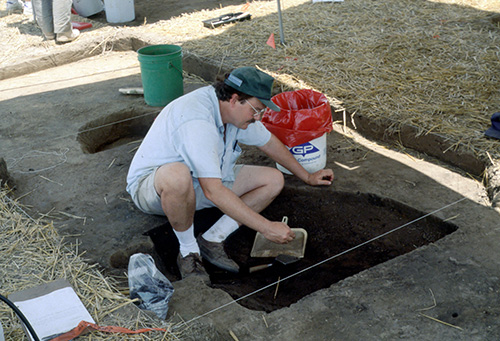
Jeff was also involved in research at other precontact sites in the area, including directing excavations at two other Parkin Phase sites as part of Arkansas Archeological Society Training Programs. The first was in 1996 at the Neeley’s Ferry site where details of the moat and palisade surrounding the site were documented, along with the partial excavation of a structure within a plowed-down mound remnant (Mitchem 2010). Defining the boundaries of the site at the request of the landowner helped to preserve the site, which was later purchased by the Archaeological Conservancy. The second was at the Richards Bridge site in 2015-2016 (Figure 7), where the well-preserved burned remains of four precontact houses, identified by geophysical survey, were excavated (Mitchem 2015). The primary aims were to compare size, configuration, and construction techniques to previous information collected at other Parkin Phase sites. Additional investigations determined that neither a defensive ditch or moat, nor palisade, were present at this site, which was unusual for a Parkin Phase site.
Jeff was also involved in salvage archeology at several sites in Northeast Arkansas, the most important of which was the Meador site during the summer of 1999 (Figure 9). A local farmer conducting land-leveling operations encountered human skeletal remains. It was determined that it was a precontact village and cemetery. The Meador family worked in cooperation with Carrie Wilson, the NAGPRA representative for the Quapaw Tribe, and the Survey to allow emergency salvage excavations at the site. Within a month, the burials and other features at the site had been recorded and removed to allow the farmer to continue with his work. The remains were immediately reburied in another location under the direction of the Quapaw Tribe. Important information was salvaged from this multicomponent site, including village patterns, wall trench house patterns, and artifact assemblages, filling gaps in the archeological knowledge of the area.
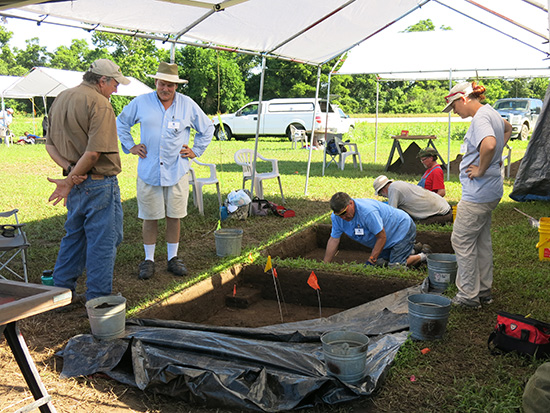
Jeff also performed outreach with the public which included tours and lectures at the park (Figure 8), artifact identifications for visitors, presentations to schools and civic groups, and even had a column in a local newspaper which covered topics about archeology, the Parkin site, and precontact Native Americans. Dr. Mitchem and then assistant Faye Futch were also involved in projects at several African American cemeteries in the Parkin vicinity as part of the Arkansas Humanities Council’s African American Cemetery Initiative.
From 2000–2003, with funding from Arkansas State Parks, Mitchem teamed with Quapaw tribal members, Parks staff, and Survey staff, on a project to have Florida artist Ted Morris create eight original paintings to depict aspects of daily life at Parkin during the 1500s. The paintings are used to provide visual aids that help park interpreters relay information about day-to-day activities of the past inhabitants to visitors. Some activities depicted include gathering clay and other activities along the riverbank, building a house, children playing, harvesting and gathering crops, and flintknapping, with inspiration for the scenes coming from archeological research at the site.
